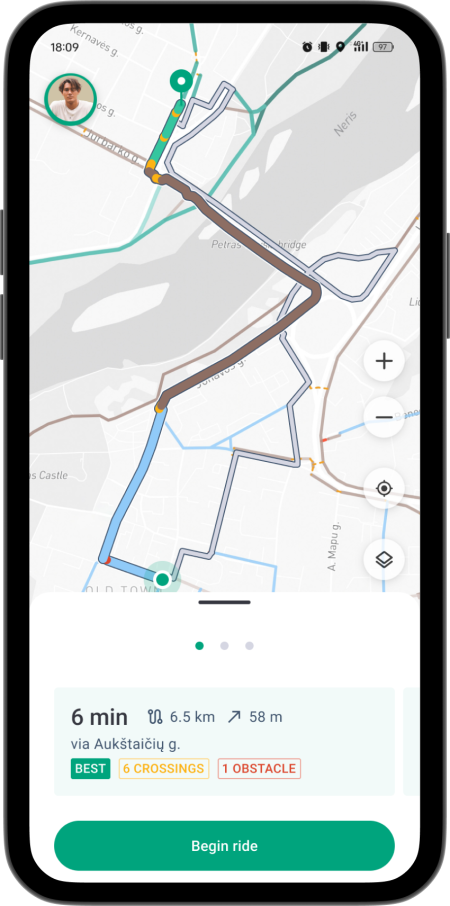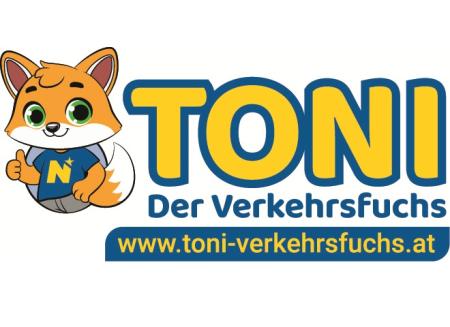Our members are dedicated to improving road safety and sharing their knowledge with the wider community. Here, you can explore our members' good practices – initiatives that have been assessed for their effectiveness in addressing a road safety problem and have proven results.
Get inspired – and sign up to share your good practices too!

Thursday, May 1, 2025
Le principali sfide in materia di sicurezza stradale che ci troviamo ad affrontare, e alle quali DUOBBRAK intende fornire una risposta concreta, sono i tassi costantemente elevati di incidenti e decessi evitabili a livello globale, esacerbati dai limiti intrinseci e dai potenziali guasti degli attuali sistemi di frenatura.
I frequenti richiami di veicoli dovuti a problemi ai freni, che colpiscono milioni di persone all'anno (si stima che i problemi ai freni contribuiscono a una percentuale significativa di incidenti con guasti meccanici), sottolineano questa fragilità e le conseguenze economiche per i produttori e la fiducia dei consumatori.
La miopia del settore nell'abbracciare innovazioni puramente meccaniche, come dimostrato dalla tiepida accoglienza iniziale di DUOBBRAK, ha contribuito a perpetuare queste vulnerabilità.
Inoltre, la dipendenza dell'industria automobilistica da materiali rari e ad alto impatto ambientale per le tecnologie di frenata crea instabilità economica e preoccupazioni geopolitiche.
Esiste una lacuna critica nella ricerca e nell'adozione di una soluzione universalmente affidabile, puramente meccanica, che migliora significativamente le prestazioni di frenata e garantisce la sicurezza anche in caso di guasto del sistema.
Questa inerzia non solo compromette la sicurezza stradale, ma ha anche implicazioni per la competitività e la sostenibilità del settore automobilistico storico occidentale.
I frequenti richiami di veicoli dovuti a problemi ai freni, che colpiscono milioni di persone all'anno (si stima che i problemi ai freni contribuiscono a una percentuale significativa di incidenti con guasti meccanici), sottolineano questa fragilità e le conseguenze economiche per i produttori e la fiducia dei consumatori.
La miopia del settore nell'abbracciare innovazioni puramente meccaniche, come dimostrato dalla tiepida accoglienza iniziale di DUOBBRAK, ha contribuito a perpetuare queste vulnerabilità.
Inoltre, la dipendenza dell'industria automobilistica da materiali rari e ad alto impatto ambientale per le tecnologie di frenata crea instabilità economica e preoccupazioni geopolitiche.
Esiste una lacuna critica nella ricerca e nell'adozione di una soluzione universalmente affidabile, puramente meccanica, che migliora significativamente le prestazioni di frenata e garantisce la sicurezza anche in caso di guasto del sistema.
Questa inerzia non solo compromette la sicurezza stradale, ma ha anche implicazioni per la competitività e la sostenibilità del settore automobilistico storico occidentale.

Thursday, April 24, 2025
Due to the necessities of the road network, generally road works occur whilst roads are still open for use by all classes of road users. Hence it is important that the pedestrian, vehicular and cycling traffic is designed and managed to reduce the safety risks of users.
Research has shown that the risk of a serious traffic collision at or in a road works site is three to five times more than on other parts of the road network (CAREC, 2018).
The implementation and maintenance of the road safety measures at work sites is important but it is equally important that all road users understand and appreciate the safety risks and the operational aspects of such work sites.
We have identified the need for specific Road Safety Awareness Education and Training with FOCUS ON WORK SITES. This aspect is commonly omitted from general Road Safety Education Programmes. Road users, namely passengers, drivers, cyclists and pedestrians across different age groups are addressed.
Research has shown that the risk of a serious traffic collision at or in a road works site is three to five times more than on other parts of the road network (CAREC, 2018).
The implementation and maintenance of the road safety measures at work sites is important but it is equally important that all road users understand and appreciate the safety risks and the operational aspects of such work sites.
We have identified the need for specific Road Safety Awareness Education and Training with FOCUS ON WORK SITES. This aspect is commonly omitted from general Road Safety Education Programmes. Road users, namely passengers, drivers, cyclists and pedestrians across different age groups are addressed.

Thursday, April 24, 2025
Driving in the wrong direction (commonly referred to as “kamikaze driving”) is one of the most dangerous incidents on roads and highways. In Spain alone, according to the Spanish Traffic Management Center (DGT), over 300 wrong-way driving incidents are reported each year. Studies show that wrong-way crashes are up to 27 times more likely to result in fatality compared to other types of highway accidents.
This type of incident often stems from driver confusion, impairment (e.g., alcohol or drugs), or poor signage, and poses a critical challenge for traffic safety authorities and infrastructure operators across Europe.
PROIN-iWrongWay is an intelligent traffic safety system designed to detect vehicles driving in the wrong direction on roads and highways. The system uses real-time monitoring to identify reverse traffic incidents and immediately activates roadside warning signals to alert the driver. Simultaneously, it notifies local authorities for rapid response and incident management.
The system is fully connected to PROIN’s IoT platform (ProinCloud), enabling remote monitoring, data analytics, and system diagnostics. It also integrates seamlessly with external smart city and ITS platforms such as Sentilo and others, ensuring full interoperability.
Moreover, PROIN-iWrongWay is connected to DGT, allowing for direct coordination and enhanced national-level traffic control.
This type of incident often stems from driver confusion, impairment (e.g., alcohol or drugs), or poor signage, and poses a critical challenge for traffic safety authorities and infrastructure operators across Europe.
PROIN-iWrongWay is an intelligent traffic safety system designed to detect vehicles driving in the wrong direction on roads and highways. The system uses real-time monitoring to identify reverse traffic incidents and immediately activates roadside warning signals to alert the driver. Simultaneously, it notifies local authorities for rapid response and incident management.
The system is fully connected to PROIN’s IoT platform (ProinCloud), enabling remote monitoring, data analytics, and system diagnostics. It also integrates seamlessly with external smart city and ITS platforms such as Sentilo and others, ensuring full interoperability.
Moreover, PROIN-iWrongWay is connected to DGT, allowing for direct coordination and enhanced national-level traffic control.

Thursday, April 24, 2025
We've developed an app with a safe map for cycling. Routes are made according to quality of infrastructure (user, company gathered and municipalities info), hazards on the road.
Users can report bad infrastructure or good things about it and routes are calculated accordingly.
Users can report bad infrastructure or good things about it and routes are calculated accordingly.

Wednesday, April 23, 2025
Sicherheit im Straßenverkehr beginnt bei den Kleinsten. Kinder zählen zu den schwächsten Verkehrsteilnehmern, da sie Gefahren oft nicht richtig einschätzen können. Um sie frühzeitig und kindgerecht mit den Grundregeln der Verkehrssicherheit vertraut zu machen, wurde 2024 das Verkehrssicherheitsprojekt „Toni, der Verkehrsfuchs“ ins Leben gerufen.
Als schlaues und charmantes Maskottchen führt Toni Kindergartenkinder auf eine spannende Entdeckungsreise. Er vermittelt anhand eines Bilderbüchleins wichtige Verkehrsregeln auf Augenhöhe der Kinder: Ampel- und Zebrastreifen-Regeln, sicheres Überqueren der Straße, die Bedeutung von Sichtbarkeit im Straßenverkehr, die Notwendigkeit des Anschnallens im Auto
Als schlaues und charmantes Maskottchen führt Toni Kindergartenkinder auf eine spannende Entdeckungsreise. Er vermittelt anhand eines Bilderbüchleins wichtige Verkehrsregeln auf Augenhöhe der Kinder: Ampel- und Zebrastreifen-Regeln, sicheres Überqueren der Straße, die Bedeutung von Sichtbarkeit im Straßenverkehr, die Notwendigkeit des Anschnallens im Auto